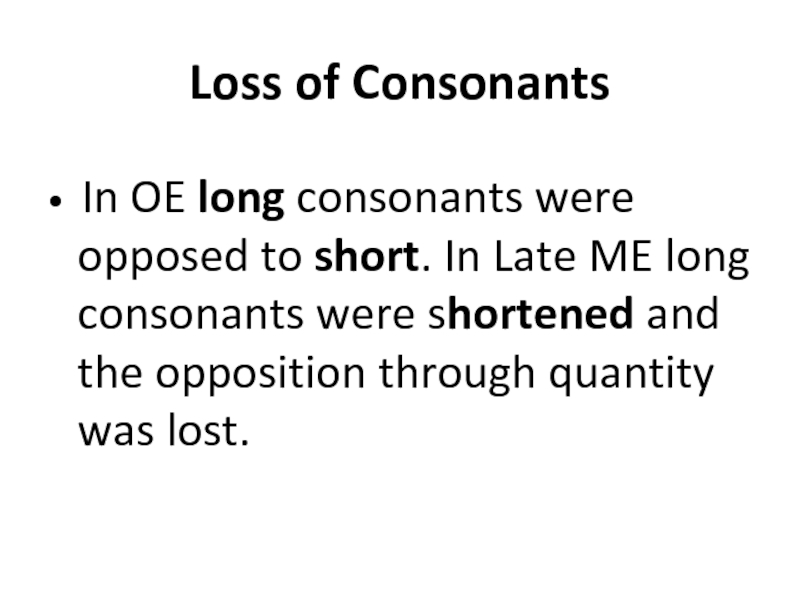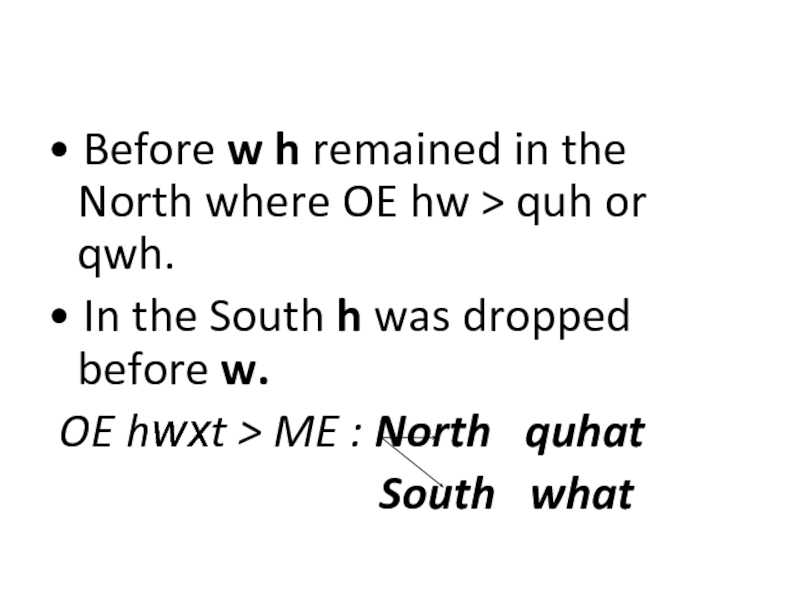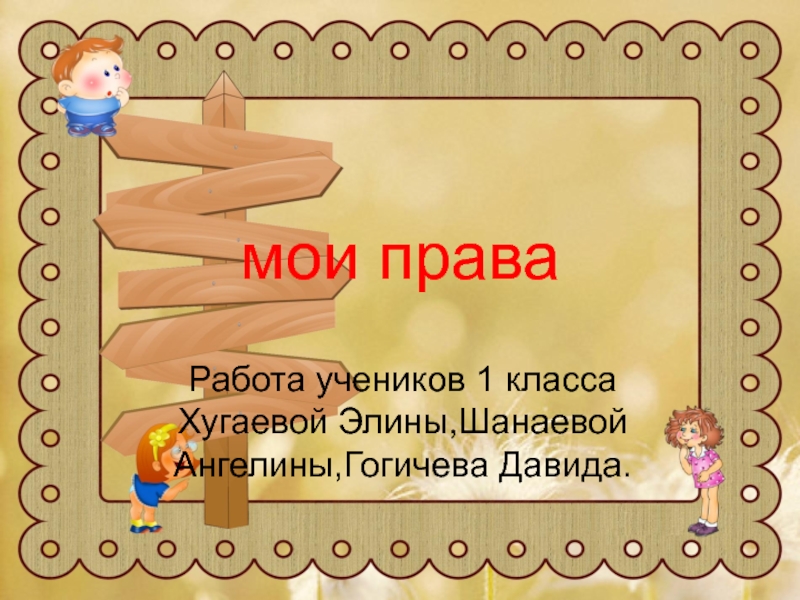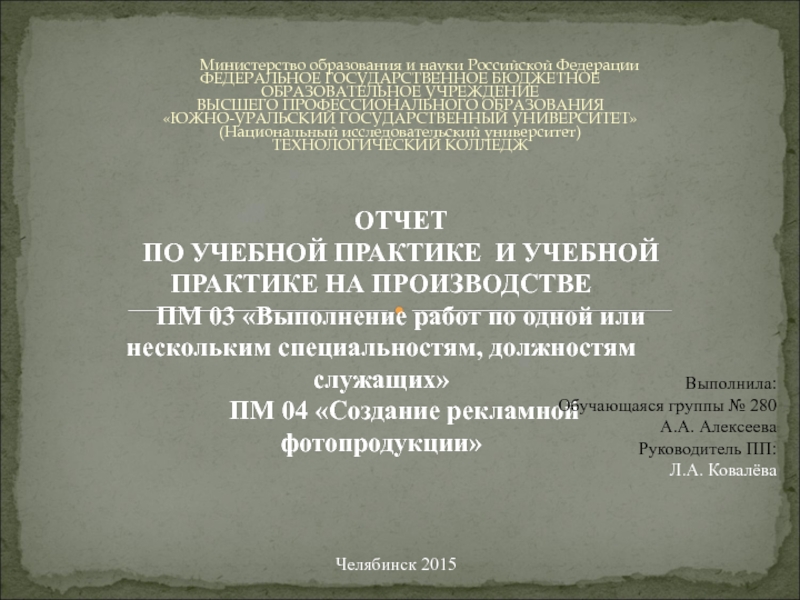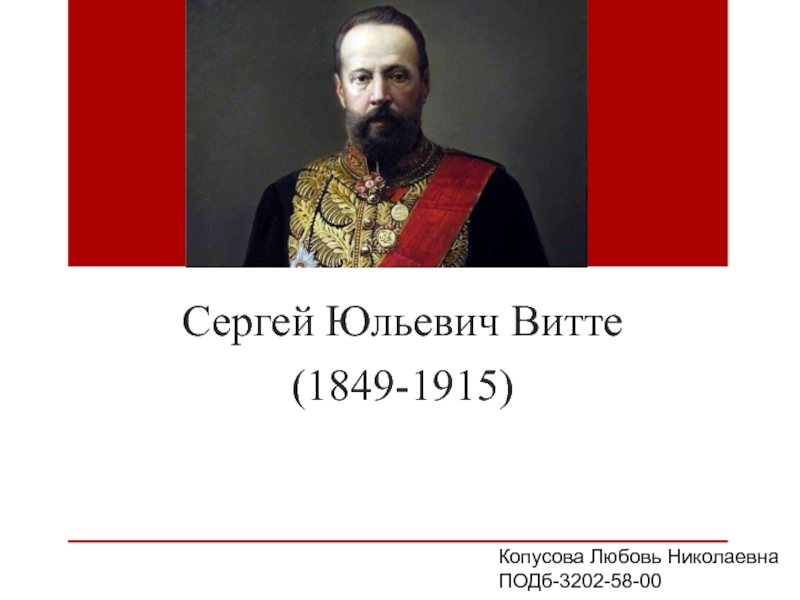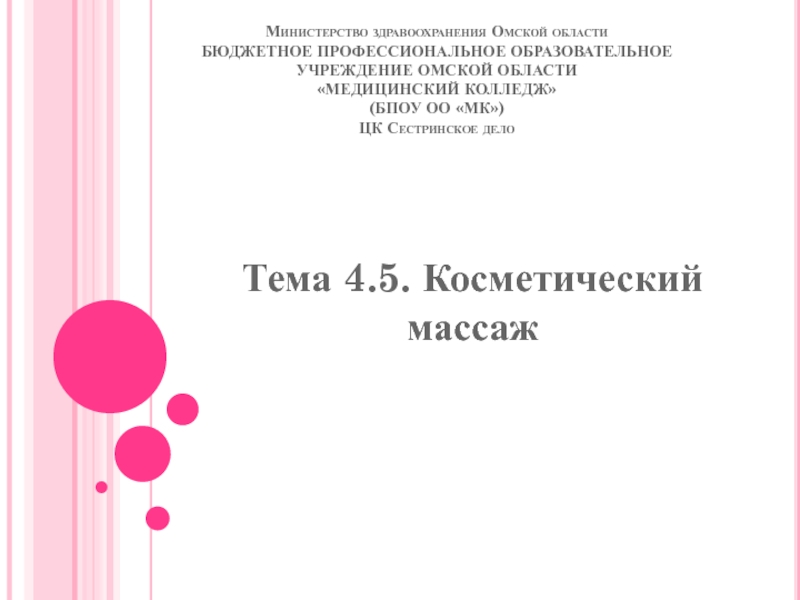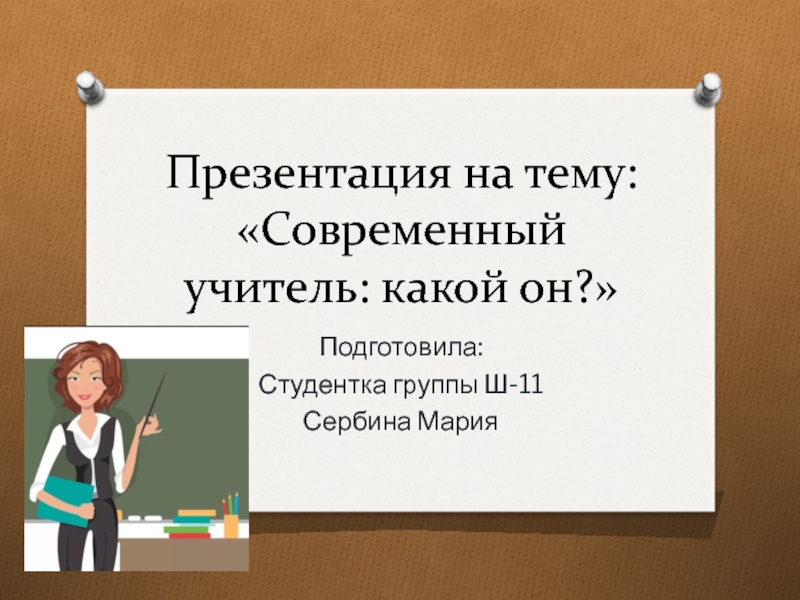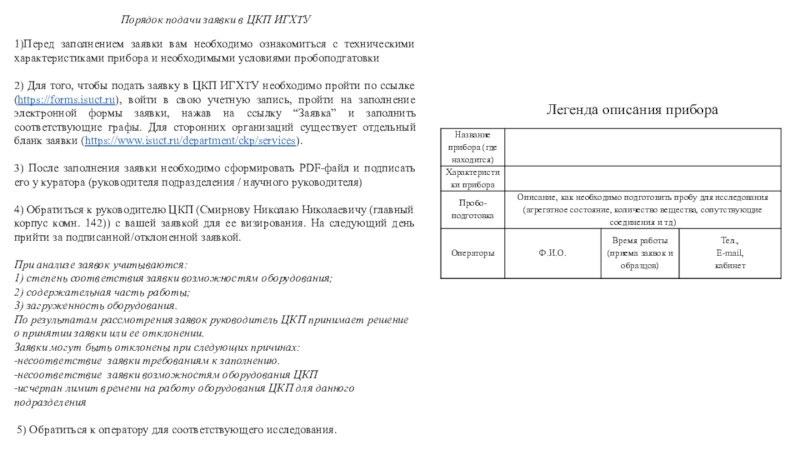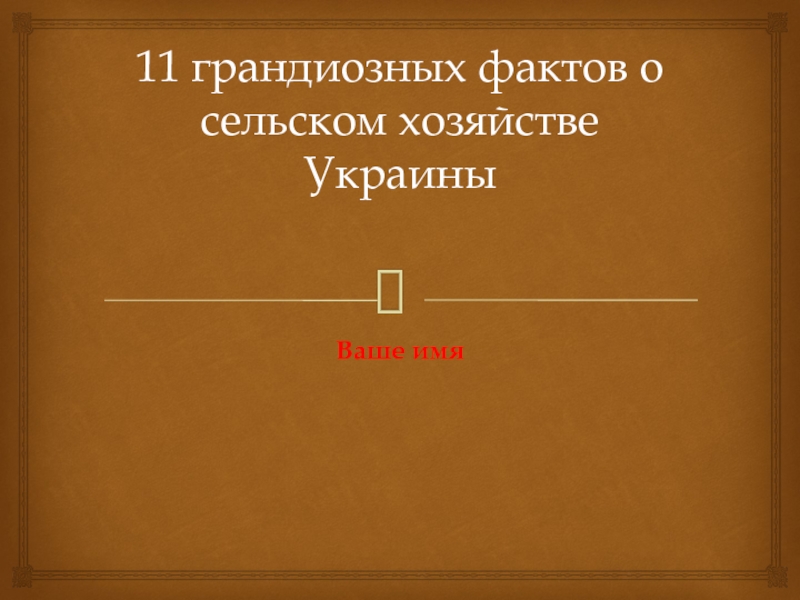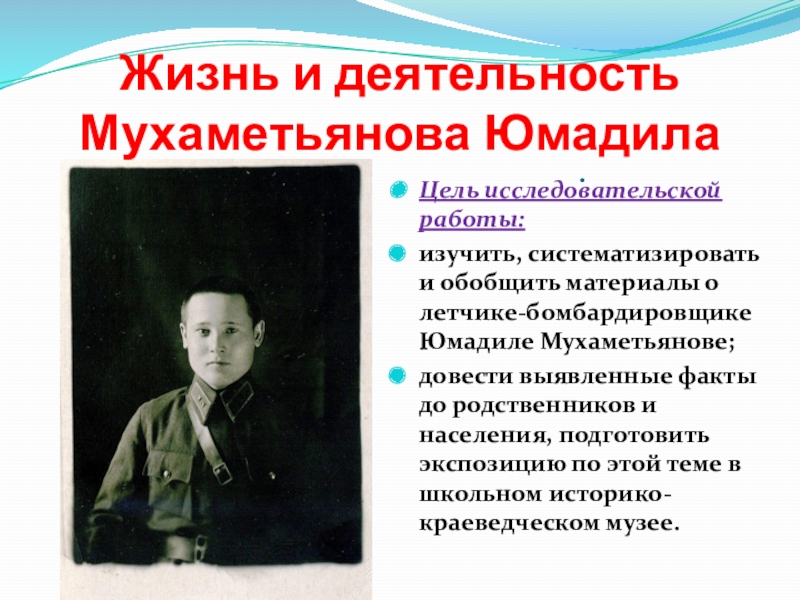Разделы презентаций
- Разное
- Английский язык
- Астрономия
- Алгебра
- Биология
- География
- Геометрия
- Детские презентации
- Информатика
- История
- Литература
- Математика
- Медицина
- Менеджмент
- Музыка
- МХК
- Немецкий язык
- ОБЖ
- Обществознание
- Окружающий мир
- Педагогика
- Русский язык
- Технология
- Физика
- Философия
- Химия
- Шаблоны, картинки для презентаций
- Экология
- Экономика
- Юриспруденция
MIDDLE ENGLISH: CHANGES IN PHONETIC SYSTEM Word Stress
Содержание
- 1. MIDDLE ENGLISH: CHANGES IN PHONETIC SYSTEM Word Stress
- 2. That is the prefix or the root
- 3. In ME period the word stress acquired
- 4. When they first appeared in the English
- 5. The loan words were assimilated and the
- 6. Vowel Changes Unstressed vowels: became
- 7. Late ME had only 2 vowels: [q]
- 8. The occurrence of only two vowels [q]
- 9. It distinguishes ME on the one hand
- 10. The final [q] disappeared in Late ME
- 11. When the ending e survived only in
- 12. words which did not have this ending before:OE stan – ME stoon, stone
- 13. But new unstressed vowels appeared in borrowed
- 14. Stressed Vowels: Stressed vowels changed in
- 15. Quantitative Changes In OE quantity was
- 16. Vowel length was an inherited feature as
- 17. 1. Short vowels were lengthened before ld,
- 18. 2. All other groups of two or
- 19. 3. Short vowels became long in open
- 20. Qualitative Changes1. OE y, y: disappeared
- 21. OE fyllan > ME
- 22. 2. OE [R] was narrowed to [L]
- 23. OE stan > ME stoon,
- 24. 3. OE short [x] > ME back [a] e.g. OE þxt > ME that [a]
- 25. Diphthongs One of the most important
- 26. Diphthongs> monophthongsOE diphthongs were contracted to monophthongs:OE
- 27. [eo][eo]
- 28. the vowel system lost two sets
- 29. These sounds between and after vowels changed
- 30. Two sets of diphthongsThese changes gave rise
- 31. System of vowels in Late Middle English
- 32. Evolution of Consonants English consonants were far more stable than vowels.
- 33. The new type of consonants developed from
- 34. Loss of Consonants In OE
- 35. Initial h was dropped before r,
- 36. Before w h remained in the
- 37. V was dropped before consonants:OE hxfde > ME had
- 38. Скачать презентанцию
That is the prefix or the root were stressed but the suffixes and endings were unstressed. Word stress in OE was fixed. It didn’t move in inflection and rarely in derivation.
Слайды и текст этой презентации
Слайд 2That is the prefix or the root were stressed but
the suffixes and endings were unstressed. Word stress in OE
was fixed. It didn’t move in inflection and rarely in derivation.Слайд 3In ME period the word stress acquired greater positional freedom
and began to play a more important role in word
derivation. These changes were connected with the assimilation of the loan words (especially from French).Слайд 4When they first appeared in the English language they probably
retained their original stress – on the ultimate syllable. This
kind of stress couldn’t be preserved for long.Слайд 5The loan words were assimilated and the stress moved closer
to the beginning of the word.
ME vertu [vqr'tjH] NE
virtue ['vWtSq]Слайд 6
Vowel Changes
Unstressed vowels:
became increasingly indistinct
in OE there were
5 short vowels in an unstressed position [e, I, a,
o, V]Слайд 7Late ME had only 2 vowels: [q] and [i]
OE fiscas
– ME fishes ['fISqz]
OE rison – ME risen ['rIzqn]
Слайд 8The occurrence of only two vowels [q] and [i] in
unstressed final syllables is an important mark of ME.
Слайд 9It distinguishes ME on the one hand from OE with
its greater variety of unstressed vowels, and, on the other
hand, from New English when ME final [q] was dropped.Слайд 10The final [q] disappeared in Late ME but it continued
to be spelt as e. In the London dialect of
Chaucer’s time it was unstable. It could be easily missed out before the following initial vowel or when required by rhythm.Слайд 11When the ending e survived only in spelling, it was
understood as means of showing the length of the vowel
in the preceding syllable and was added to theСлайд 13But new unstressed vowels appeared in borrowed words or developed
from stressed ones, as a result of various changes:
e.g. vocalization
of [r] writer [er] [q]
actor [or] [q]
Слайд 14
Stressed Vowels:
Stressed vowels changed in quality and in quantity. Not
a single OE monophthong or diphthong remained unchanged in the
course of history.Слайд 15
Quantitative Changes
In OE quantity was the main basis of correlation
in the vowel system: short vowels were opposed to long
ones.Слайд 16Vowel length was an inherited feature as OE short vowels
developed from PG short vowels. In late OE and Early
ME vowel length began to depend on phonetic condition.Слайд 171. Short vowels were lengthened before ld, nd, mb unless
followed by a third consonant (the 9-th c.)
OE wild >
ME wild [wJld]Слайд 182. All other groups of two or more consonants made
the preceding long vowels short (11-th
c.)OE cepte > ME kepte ['keptq]
Слайд 193. Short vowels became long in open syllables (mainly [e],
[a], [o]) (12-th – 13-th c.)
OE open > ME open
['Lpqn]OE namu > ME name ['nRmq]
Слайд 20
Qualitative Changes
1. OE y, y: disappeared in ME merging with
various sounds in different dialects:
Kentish e, e:
South-West, West Midlands
u, HEast Midland and Northern i
Слайд 21OE fyllan > ME Kentish
fellen
(to fill)
West Midland fullen 1. [fyllqn]and South western 2. [fullqn]
East Midland fillen
Northern
Слайд 222. OE [R] was narrowed to [L] (all
long monophthongs became closer)
[R] > [L] in all the dialects
except the Northern groupСлайд 25
Diphthongs
One of the most important sound changes of the Early
ME period was the loss of OE diphthongs and the
growth of new ones.Слайд 26Diphthongs> monophthongs
OE diphthongs were contracted to monophthongs:
OE [eQ] > ME
[F:] east > eest (east)
OE [eQ] > ME [a]
earm > arm (arm)Слайд 27[eo]
[eo] [e:] [e]
[io]
[J] [I]
[io]
deop > deep [e:] (deep);
ceosan > chesen ['Ce:zqn] (choose)
heorte > herte (heart)
Слайд 28 the vowel system lost two sets of diphthongs, long
and short.
a new set of diphthongs developed from some
sequence of vowels and consonants due to the vocalization of OE [j] and [g/h].Слайд 29These sounds between and after vowels changed into [i] and
[u] and formed diphthongs together with the preceding vowels:
E.g. OE
dxZ > ME day [daI]Слайд 30Two sets of diphthongs
These changes gave rise to two sets
of diphthongs:
i – glides
u – glides
Слайд 33The new type of consonants developed from OE palatal plosives
[k', g‘, g’] and from [sk']. The three new phonemes
were [C], [G], [S] (in writing - ch, tch, g, dg, sh, ssh, sch)Слайд 34
Loss of Consonants
In OE long consonants were opposed to
short. In Late ME long consonants were shortened and the
opposition through quantity was lost.Слайд 35 Initial h was dropped before r, l, n.
OE hrinZ
> ME ring (ring)
OE hlaford > ME loverd (lord)
Слайд 36 Before w h remained in the North where OE
hw > quh or qwh.
In the South h
was dropped before w.OE hwxt > ME : North quhat
South what
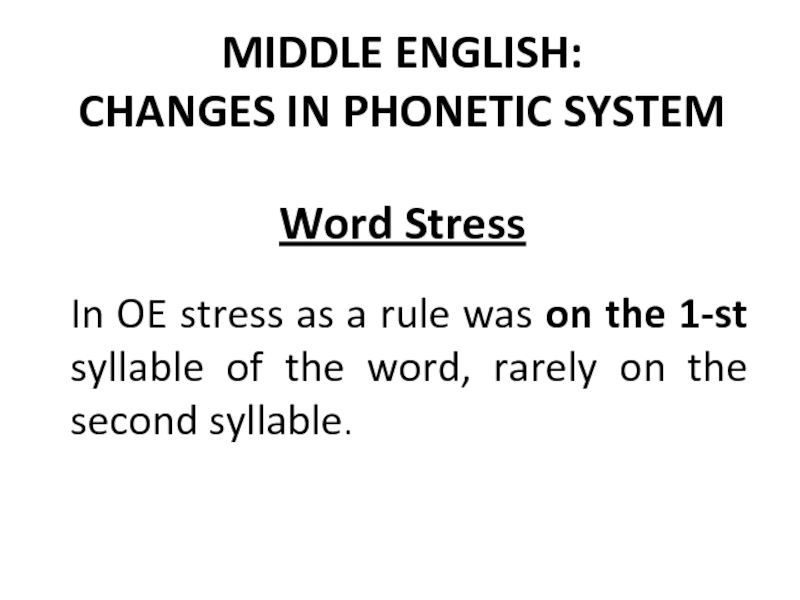


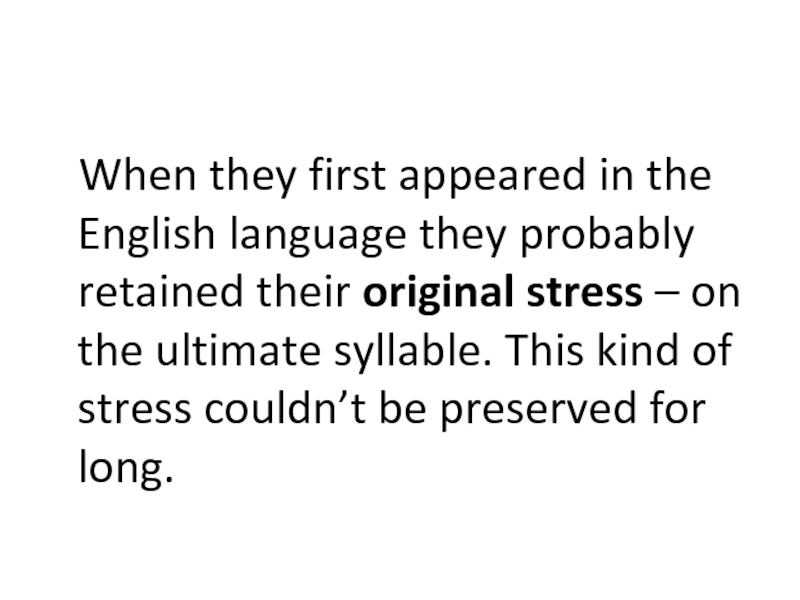
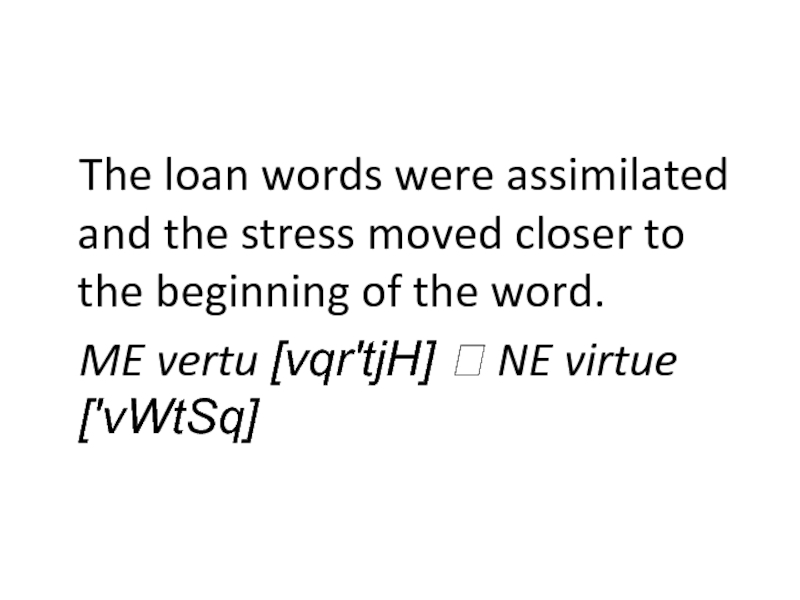

![MIDDLE ENGLISH: CHANGES IN PHONETIC SYSTEM Word Stress Late ME had only 2 vowels: [q] and [i]OE fiscas – Late ME had only 2 vowels: [q] and [i]OE fiscas – ME fishes ['fISqz]OE rison – ME](/img/thumbs/796da54f8006458c7dc1f80dddc83407-800x.jpg)
![MIDDLE ENGLISH: CHANGES IN PHONETIC SYSTEM Word Stress The occurrence of only two vowels [q] and [i] in unstressed The occurrence of only two vowels [q] and [i] in unstressed final syllables is an important mark](/img/thumbs/6cc68d0a668f6e570d3733784143b435-800x.jpg)
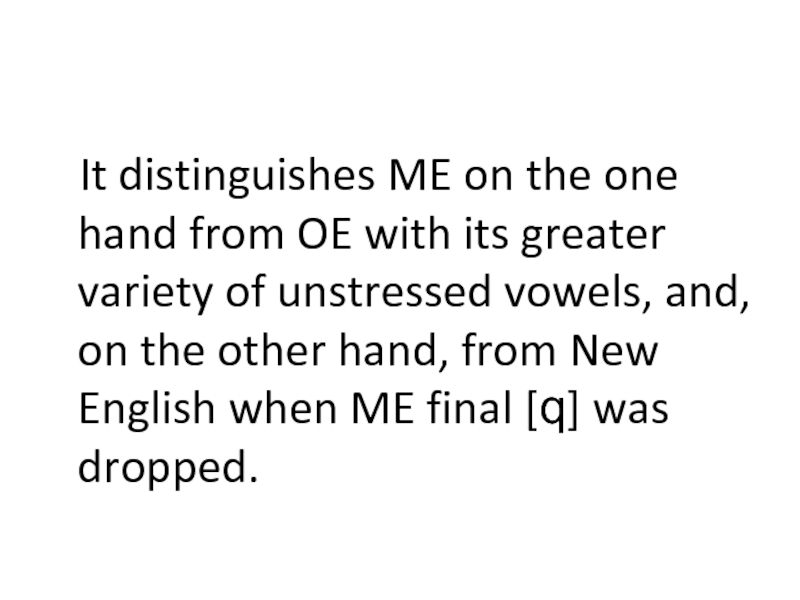
![MIDDLE ENGLISH: CHANGES IN PHONETIC SYSTEM Word Stress The final [q] disappeared in Late ME but it continued to The final [q] disappeared in Late ME but it continued to be spelt as e. In the](/img/thumbs/16a70caab344413ded6cad6bf4a84f98-800x.jpg)
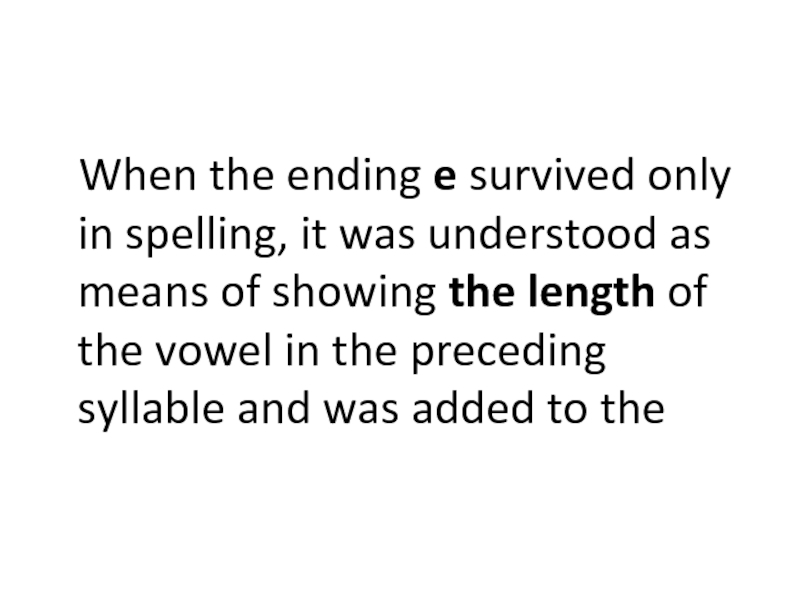
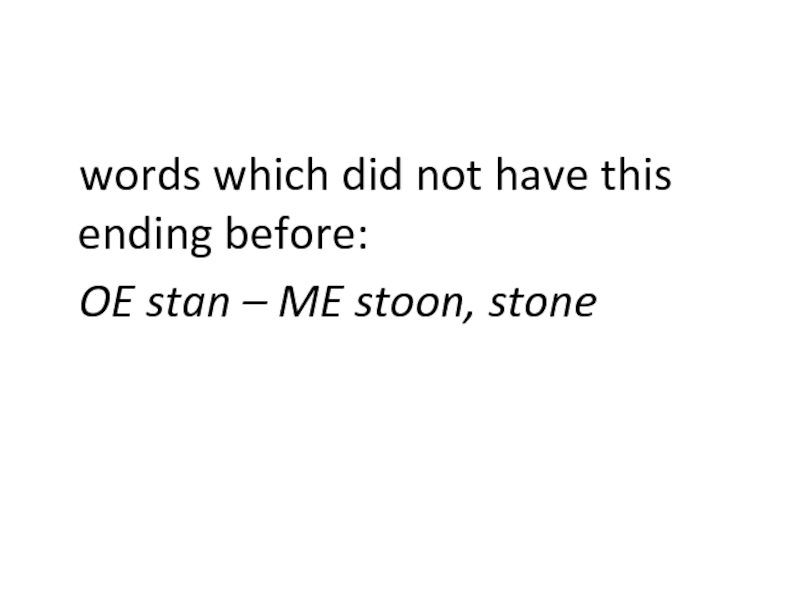
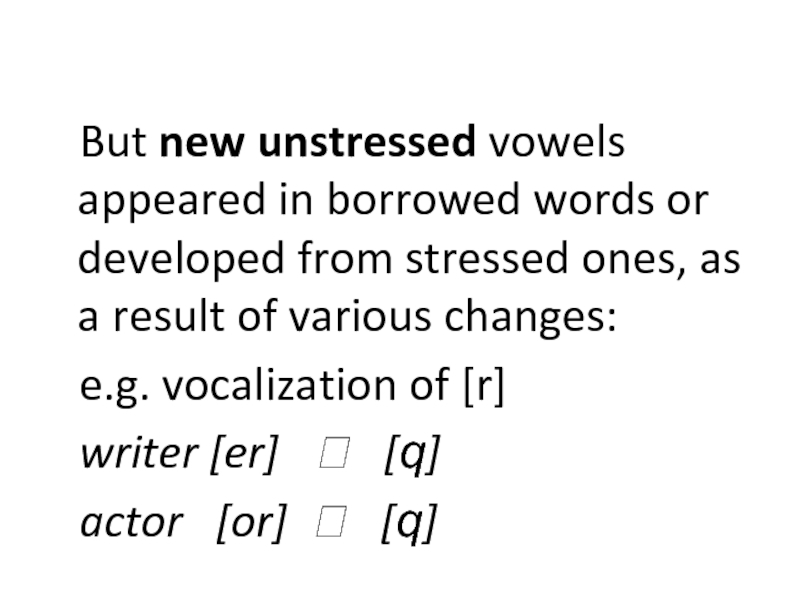
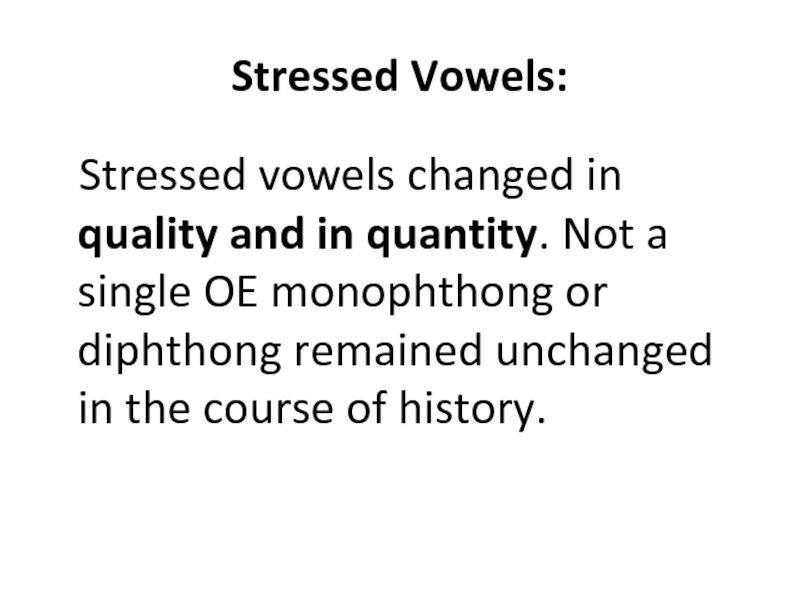

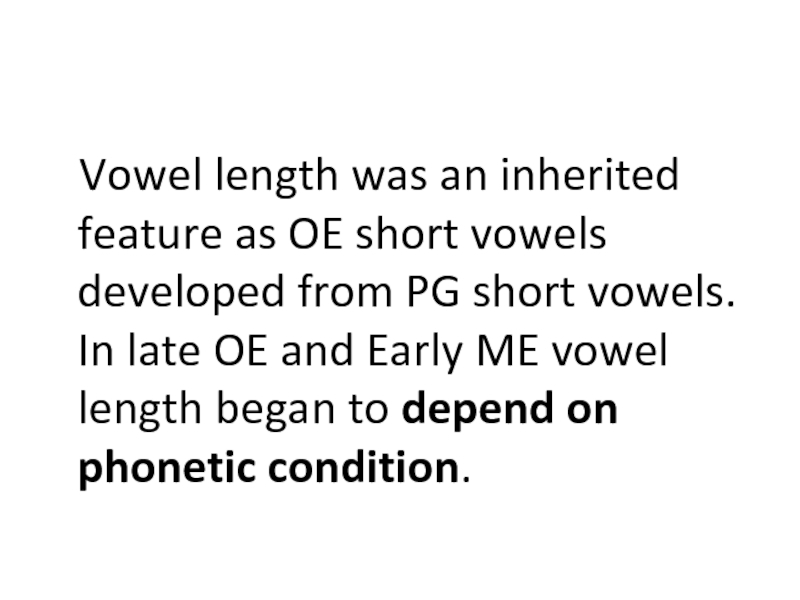
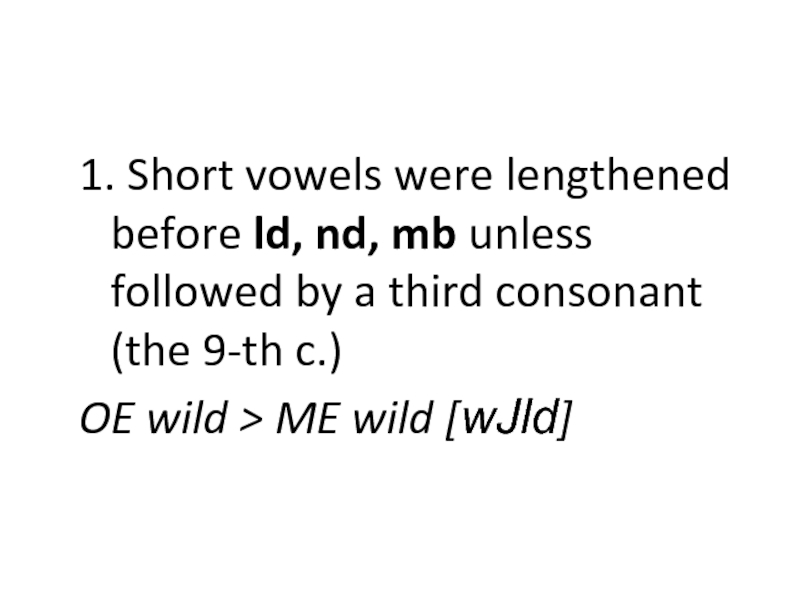
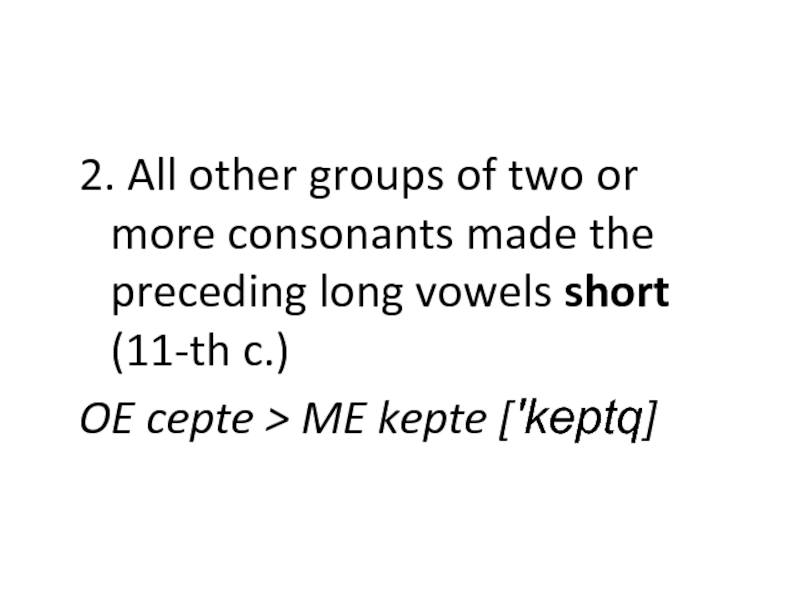
![MIDDLE ENGLISH: CHANGES IN PHONETIC SYSTEM Word Stress 3. Short vowels became long in open syllables (mainly [e], [a], 3. Short vowels became long in open syllables (mainly [e], [a], [o]) (12-th – 13-th c.)OE open](/img/thumbs/acd0e0ba96f4d3f2b7d0f336fd8fb22a-800x.jpg)

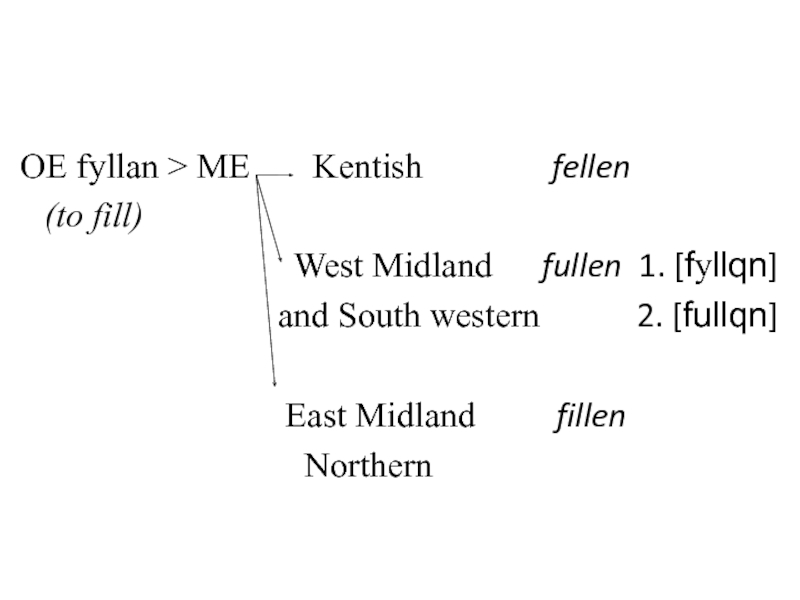
![MIDDLE ENGLISH: CHANGES IN PHONETIC SYSTEM Word Stress 2. OE [R] was narrowed to [L] (all long monophthongs 2. OE [R] was narrowed to [L] (all long monophthongs became closer)[R] > [L] in](/img/thumbs/0c24b193de2fc8780f1e3e7720fb603e-800x.jpg)
![MIDDLE ENGLISH: CHANGES IN PHONETIC SYSTEM Word Stress OE stan > ME stoon, stone ['stLn(q)] (stone) Northern stan(e) OE stan > ME stoon, stone ['stLn(q)] (stone)](/img/thumbs/d7113a33db3aa0d453864c394b97e036-800x.jpg)
![MIDDLE ENGLISH: CHANGES IN PHONETIC SYSTEM Word Stress 3. OE short [x] > ME back [a] e.g. OE þxt > ME that [a] 3. OE short [x] > ME back [a] e.g. OE þxt > ME that [a]](/img/thumbs/c34752e8020cb5f384f9f47808e165c1-800x.jpg)
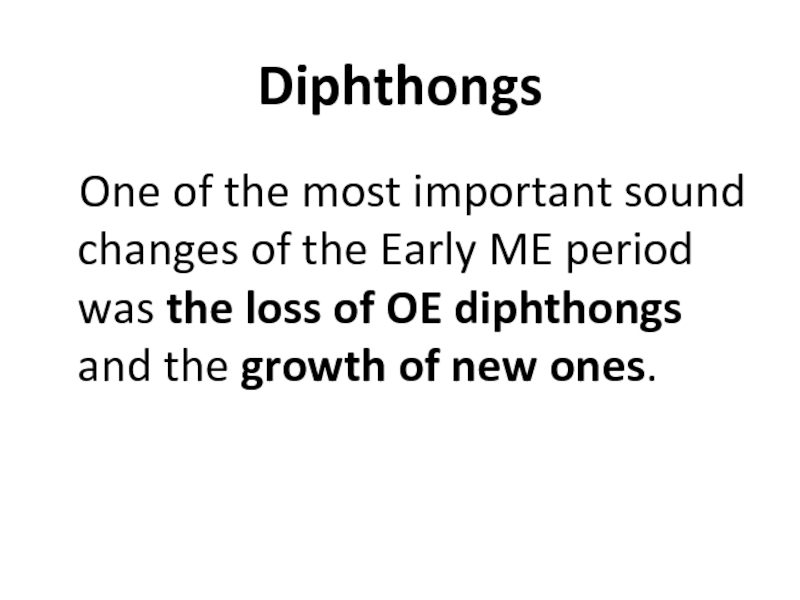
![MIDDLE ENGLISH: CHANGES IN PHONETIC SYSTEM Word Stress Diphthongs> monophthongsOE diphthongs were contracted to monophthongs:OE [eQ] > ME [F:] Diphthongs> monophthongsOE diphthongs were contracted to monophthongs:OE [eQ] > ME [F:] east > eest (east)OE [eQ]](/img/thumbs/1d875bea07724ef49725aa027b29d3b7-800x.jpg)
![MIDDLE ENGLISH: CHANGES IN PHONETIC SYSTEM Word Stress [eo][eo] [e:] [e][io] [J] [eo][eo] [e:] [e][io]](/img/thumbs/8c213a9c0a61ae0616183f1858107d63-800x.jpg)

![MIDDLE ENGLISH: CHANGES IN PHONETIC SYSTEM Word Stress These sounds between and after vowels changed into [i] and [u] These sounds between and after vowels changed into [i] and [u] and formed diphthongs together with the](/img/thumbs/66336734385797e43ec97a13ac54d9b1-800x.jpg)
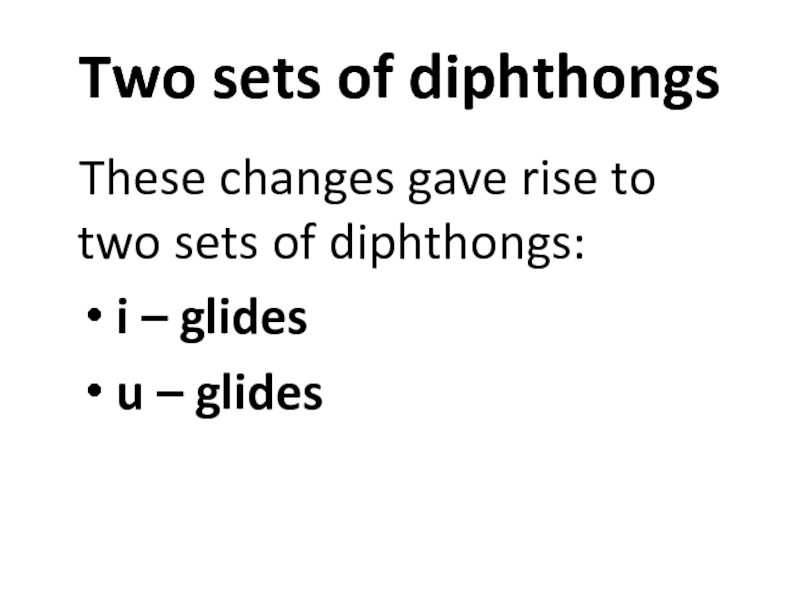


![MIDDLE ENGLISH: CHANGES IN PHONETIC SYSTEM Word Stress The new type of consonants developed from OE palatal plosives [k', The new type of consonants developed from OE palatal plosives [k', g‘, g’] and from [sk']. The](/img/thumbs/a7933f4ed4b61d5e70e4787fab863cd9-800x.jpg)
